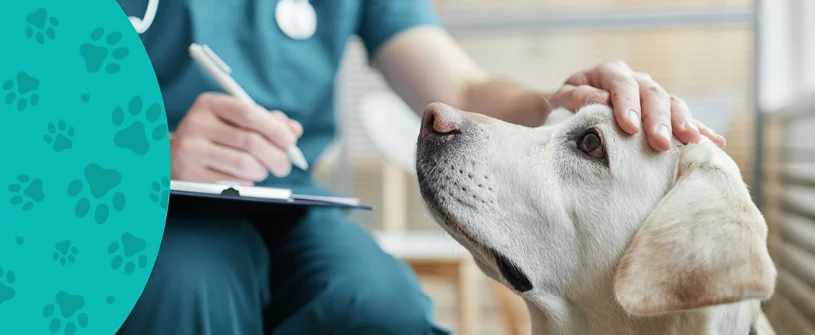As a loving pet owner, you want nothing but the best for your furry friend. That includes ensuring their health and well-being. Pet insurance is a vital tool that can help you provide the best possible care for your pet. In this comprehensive guide, we will walk you through everything you need to know about pet insurance, from its basics to choosing the right policy and understanding its benefits.
What is Pet Insurance?
Pet insurance is a specialized financial product designed to help pet owners cover the cost of veterinary care for their beloved animals. It operates on a similar principle to health insurance for humans but is tailored specifically to the needs of pets.
At its core, pet insurance is a contract between you, the pet owner, and the insurance provider. In exchange for a regular premium payment, the insurance company agrees to assist in covering the expenses associated with your pet’s healthcare. This can include various medical treatments, surgeries, and medications.
Key Points to Understand about Pet Insurance:
1. Coverage Variety: Pet insurance policies can vary significantly, offering different levels of coverage. Some policies may only cover accidents and emergencies, while others include routine check-ups and preventive care.
2. Deductibles and Premiums: Like any insurance, pet insurance comes with deductibles and premiums. The deductible is the amount you pay out of pocket before the insurance coverage kicks in, and the premium is the regular fee you pay to maintain the policy.
3. Reimbursement: Pet insurance typically operates on a reimbursement basis. This means that after you’ve paid for your pet’s medical expenses, you can submit a claim to the insurance company, and they will reimburse you for eligible costs.
4. Exclusions: Most pet insurance policies have exclusions. These are specific conditions, treatments, or situations that the policy does not cover. It’s essential to review these exclusions carefully when choosing a policy.
5. Age and Breed Considerations: The age and breed of your pet can impact the availability and cost of insurance. Some breeds are prone to specific health issues, and older pets may have limited coverage options.
6. Pre-Existing Conditions: Pet insurance typically does not cover pre-existing conditions. These are health issues that your pet had before obtaining the insurance policy.
In summary, pet insurance offers peace of mind to pet owners by helping to manage unexpected veterinary expenses. It provides financial support for necessary medical care, ensuring that your furry family member can receive the treatment they need without causing undue financial strain. Understanding the basics of pet insurance is the first step in providing your pet with the best possible care.
How Does Pet Insurance Work?
Understanding how pet insurance works is crucial for making an informed decision about the well-being of your furry companion. Pet insurance operates on a set of principles and practices that can vary from one policy to another, so let’s delve into the key aspects of how it functions.
Coverage Options
Pet insurance policies come in various forms, offering different levels of coverage to suit the needs of different pet owners. Here’s an overview of the typical coverage options:
1. Accident-Only Coverage: This type of policy covers expenses related to accidents or injuries. It is the most basic form of pet insurance and is often more affordable. However, it does not cover illnesses or pre-existing conditions.
2. Accident and Illness Coverage: This is a more comprehensive policy that includes both accident-related expenses and treatment for illnesses. It covers a broader range of medical conditions and is the most popular choice among pet owners.
3. Wellness Plans: Some insurance providers offer wellness plans as an add-on to their policies. These plans cover routine veterinary care, such as vaccinations, annual check-ups, and preventive treatments. They help with the cost of maintaining your pet’s overall health.
Deductibles and Premiums
Similar to human insurance, pet insurance involves deductibles and premiums:
1. Deductibles: When you file a claim with your pet insurance provider, you are responsible for paying a deductible before the insurance coverage kicks in. Deductibles can vary in amount, and you can choose a higher deductible to lower your monthly premium or vice versa.
2. Premiums: Premiums are the regular payments you make to maintain your pet insurance policy. These payments are typically made on a monthly basis. The cost of premiums can vary based on factors like your pet’s age, breed, and the level of coverage you choose.
Reimbursement
Pet insurance operates on a reimbursement basis, which means you pay for your pet’s medical expenses upfront, and then you submit a claim to your insurance provider. After reviewing your claim, the insurance company will reimburse you for eligible costs.
1. Reimbursement Percentage: Most pet insurance policies offer a range of reimbursement percentages. Common options include 70%, 80%, and 90%. The higher the percentage, the more the insurance company will cover of your eligible expenses.
2. Annual Limits: Policies often come with an annual limit, which is the maximum amount the insurance company will reimburse in a single year. Make sure to choose a policy with an annual limit that suits your budget and expected healthcare needs for your pet.
Exclusions
Pet insurance policies typically have exclusions, which are conditions, treatments, or situations that are not covered by the policy. Exclusions can vary between providers, but they often include:
1. Pre-Existing Conditions: Pet insurance does not cover health issues that your pet had before obtaining the policy. This is a standard exclusion to prevent fraud.
2. Routine and Preventive Care: Basic wellness and routine care, such as vaccinations and dental cleanings, are often excluded from standard policies. However, some providers offer wellness plans that cover these services.
Understanding how pet insurance works is essential for making the right choice for your pet’s health and your financial peace of mind. Before selecting a policy, carefully review the coverage options, deductibles, premiums, and exclusions to ensure you choose a plan that aligns with your pet’s needs and your budget.
Choosing the Right Policy
Selecting the right pet insurance policy is a crucial decision for pet owners. It involves considering various factors to ensure that you provide your furry friend with the best possible coverage without breaking the bank. Here are some essential considerations when choosing the right pet insurance policy:
Breed Considerations
Different dog and cat breeds have varying susceptibility to specific health issues. Some breeds are prone to genetic conditions that may require specialized care. When choosing a pet insurance policy, take your pet’s breed into account.
1. Purebred Considerations: Purebred dogs and cats often have known genetic predispositions to certain diseases or conditions. For instance, Labrador Retrievers may be more prone to hip dysplasia, while Siamese cats may have a higher risk of dental issues. Ensure your policy covers these breed-specific conditions.
2. Mixed Breeds: If you have a mixed-breed pet, consider their predominant breed(s) when assessing potential health risks. Even mixed-breed animals can be susceptible to certain genetic conditions.
Age of Your Pet
The age of your pet is another crucial factor in selecting the right policy. Most pet insurance providers have age restrictions:
1. Young Pets: If you have a young pet, you have the advantage of starting insurance when they are healthy and before any potential health issues arise. Insurance for younger pets is typically more affordable.
2. Older Pets: For older pets, insurance may be more expensive, and there may be limitations on coverage. Some providers may not offer new policies for pets over a certain age, while others may have restrictions on coverage for senior pets.
Pre-Existing Conditions
Pet insurance does not cover pre-existing conditions, which are health issues that your pet had before obtaining the policy. It’s essential to understand how each insurance provider defines pre-existing conditions and their policies regarding them.
1. Waiting Periods: Many pet insurance policies have waiting periods, during which certain conditions are not covered. These waiting periods can vary in length, often ranging from 14 to 30 days.
2. Coverage for Chronic Conditions: Some providers offer coverage for chronic conditions if your pet remains symptom-free and treatment-free for a specified period after the policy begins. This can be advantageous for pets with pre-existing conditions that are currently stable.
Customizable Plans
Look for pet insurance providers that offer customizable plans. This allows you to tailor your policy to meet your specific needs and budget. Some customizable options include:
1. Deductibles: Choose a deductible that aligns with your financial capabilities. A higher deductible can lead to lower monthly premiums, while a lower deductible may mean higher monthly costs.
2. Reimbursement Percentage: Select a reimbursement percentage that suits your budget. Options commonly range from 70% to 90%. The higher the percentage, the more the insurance company covers of your eligible expenses.
3. Coverage Limits: Decide on an annual limit that matches your expectations for your pet’s healthcare needs. Some policies offer unlimited coverage, while others have specific annual limits.
Research and Compare
Before making a final decision, conduct thorough research and compare policies from multiple providers. Consider factors such as customer reviews, the reputation of the insurance company, and the availability of customer support. It’s also essential to read the fine print of the policy to understand all terms, conditions, and exclusions.
Choosing the right pet insurance policy requires careful consideration of your pet’s breed, age, and health status, as well as your budget and preferences. By understanding your pet’s unique needs and evaluating insurance options accordingly, you can provide them with the best possible coverage and ensure their well-being throughout their life. Remember that making an informed decision today can lead to peace of mind and financial security for both you and your beloved pet in the future.
Benefits of Pet Insurance
Pet insurance offers a range of valuable benefits for both pets and their owners, providing financial peace of mind and ensuring access to top-quality veterinary care. Here are some of the key advantages of having pet insurance:
Financial Peace of Mind
1. Cost Management: One of the most significant benefits of pet insurance is its ability to help manage unexpected veterinary expenses. When your pet faces an illness or injury, the last thing you want to worry about is how to afford their medical care. Pet insurance provides a safety net, covering a portion of the costs, which can be substantial.
2. No Budgetary Constraints: With pet insurance, you won’t be forced to make decisions about your pet’s health based solely on financial considerations. You can choose the best treatment options for your pet without worrying about breaking the bank.
3. Predictable Expenses: Pet insurance policies typically have fixed monthly premiums and deductibles. This predictability allows you to budget for your pet’s healthcare needs effectively, ensuring you’re always prepared for unexpected medical bills.
Access to Top-Quality Veterinary Care
1. Freedom to Choose: Pet insurance gives you the freedom to choose the best veterinary care available, without being limited by cost considerations. Whether your pet needs surgery, specialized treatments, or consultations with veterinary specialists, you can make decisions based on what’s best for their health.
2. Timely Care: Financial coverage from pet insurance allows you to seek immediate medical attention for your pet when needed. Delaying treatment due to financial concerns can lead to worsened health conditions. Pet insurance ensures timely care, increasing the chances of successful treatment.
3. Emergency Care: In emergency situations, every moment counts. Pet insurance can cover the expenses associated with emergency room visits, critical care, and life-saving treatments, ensuring that your pet receives the urgent care they require.
Peace of Mind
1. Emotional Support: Pet owners know the deep emotional bonds they share with their animals. Pet insurance provides peace of mind, knowing that you can provide the best care for your beloved companion, promoting their happiness and well-being.
2. Lifelong Coverage: Many pet insurance policies offer lifelong coverage, meaning that as your pet ages and potentially develops health issues, they remain eligible for insurance benefits. This continuity of coverage ensures your pet receives care throughout their life.
3. Reduced Stress: Dealing with a sick or injured pet is stressful enough. Pet insurance alleviates some of that stress by removing financial worries, allowing you to focus on your pet’s recovery.
Potential Cost Savings
While pet insurance does involve monthly premiums, it can result in significant cost savings over your pet’s lifetime:
1. Avoiding High Out-of-Pocket Costs: Without insurance, you may face substantial out-of-pocket expenses for unexpected veterinary care. Pet insurance helps offset these costs, potentially saving you thousands of dollars over the years.
2. Preventive Care: Some policies offer coverage for routine check-ups, vaccinations, and preventive treatments. This can encourage pet owners to maintain their pet’s overall health, potentially reducing the risk of costly illnesses.
3. Coverage for Chronic Conditions: Chronic conditions can require ongoing treatment and medication. Pet insurance can cover these expenses, preventing the financial burden from becoming overwhelming.
Pet insurance offers a range of benefits that enhance the well-being of both pets and their owners. It provides financial security, access to top-quality veterinary care, and peace of mind, allowing you to provide your pet with the best possible life. By considering pet insurance as part of your pet’s healthcare plan, you can ensure they receive the care they deserve throughout their lifetime.
Common Exclusions in Pet Insurance
While pet insurance is a valuable resource for covering a wide range of veterinary expenses, it’s essential to understand that policies often come with exclusions—specific conditions, treatments, or situations that are not covered by the insurance. These exclusions can vary between providers and policies, so it’s crucial to read the fine print carefully and be aware of what may not be covered. Here are some common exclusions you might encounter in pet insurance policies:
Pre-Existing Conditions
One of the most fundamental exclusions in pet insurance is coverage for pre-existing conditions. Pre-existing conditions are health issues that your pet had before obtaining the insurance policy. Insurance providers typically do not cover any expenses related to these conditions.
What It Means: If your pet has a medical condition or injury before you purchase pet insurance, any treatment or care associated with that condition will not be covered. This exclusion is in place to prevent fraudulent claims.
Example: If your dog has been diagnosed with hip dysplasia before you buy a pet insurance policy, the insurance company will not cover any expenses related to hip dysplasia or its treatment.
Routine and Preventive Care
Most standard pet insurance policies do not cover routine and preventive care. These are basic healthcare services that are considered part of responsible pet ownership, such as vaccinations, annual check-ups, and dental cleanings.
What It Means: Expenses for routine check-ups, vaccinations, and preventive treatments are typically not covered by pet insurance. You’ll need to budget for these routine costs separately.
Example: If your cat needs an annual dental cleaning as part of its preventive care, the cost of the cleaning will not be covered by your pet insurance.
Cosmetic Procedures
Cosmetic procedures, such as tail docking or ear cropping, are generally excluded from pet insurance coverage. These procedures are often performed for breed-specific or aesthetic reasons rather than for medical necessity.
What It Means: If you choose to have a cosmetic procedure done on your pet, the cost will not be covered by your pet insurance policy. Cosmetic procedures are typically considered elective and not eligible for reimbursement.
Example: If you want to have your dog’s tail docked for cosmetic reasons, the cost of the procedure will not be covered by your pet insurance.
Pre-Existing Conditions for the Same Body Part
Even if your pet didn’t have a pre-existing condition before obtaining the insurance, some policies exclude coverage for conditions that affect the same body part as a previously treated issue.
What It Means: If your pet had a prior medical issue in a specific body part, and a new condition arises in that same area, the insurance company may classify it as a pre-existing condition and not cover the expenses.
Example: If your dog previously had surgery on its right front leg, and later develops a new issue with the same leg, the insurance may not cover the new condition.
Waiting Periods
Many pet insurance policies have waiting periods, during which certain conditions or treatments are not covered. These waiting periods can vary in length, often ranging from 14 to 30 days.
What It Means: During the waiting period after purchasing a policy, specific treatments or conditions may not be eligible for coverage. The purpose of the waiting period is to prevent fraud and ensure that pet owners don’t purchase insurance only after their pet becomes ill.
Example: If you buy a pet insurance policy and your pet gets sick within the first 14 days, the illness may not be covered during the waiting period.
Specific Breeds and Genetic Conditions
Some policies exclude coverage for specific breeds and genetic conditions associated with those breeds. This exclusion is often based on the known health issues that certain breeds may be predisposed to.
What It Means: If your pet belongs to a breed that is listed as an exclusion in your policy and develops a genetic condition common to that breed, the treatment for that condition may not be covered.
Example: If you have a Bulldog, and your policy excludes Bulldogs due to their predisposition to certain health issues, treatment for those specific conditions may not be covered.
Experimental or Investigational Treatments
Most pet insurance policies do not cover the cost of experimental or investigational treatments. These are treatments that are not yet widely accepted or proven to be effective in the veterinary field.
What It Means: If your pet requires a treatment that is considered experimental or investigational, you will likely need to pay for it out of pocket.
Example: If a new, cutting-edge treatment for a rare condition becomes available, your pet insurance may not cover the cost of that treatment because it is not yet considered standard practice.
Understanding these common exclusions in pet insurance policies is crucial when choosing the right coverage for your pet. To make an informed decision, carefully review the terms and conditions of the policy, ask questions of the insurance provider, and consider your pet’s specific needs and health history. Additionally, if you have concerns about exclusions or specific conditions, you may explore options for add-on coverage or riders that can provide additional protection.
Overcoming Mobile Learning Challenges
Mobile learning has revolutionized education and training by making learning more accessible and flexible. However, like any educational approach, it comes with its unique set of challenges. In this article, we will explore these challenges and provide strategies for overcoming them to ensure the success of mobile learning initiatives.
1. Device and Platform Diversity
Challenge: The wide variety of mobile devices and operating systems can pose compatibility issues. Ensuring that content works seamlessly across different devices can be challenging.
Solution: Adopt a responsive design approach. Create content that adapts to various screen sizes and orientations. Test the content on different devices and platforms to identify and address compatibility issues. Prioritize mobile-friendly web design and cross-platform app development.
2. Connectivity Issues
Challenge: Not all learners have access to reliable internet connections, especially in remote or underserved areas. This can hinder the ability to download content or engage in real-time activities.
Solution: Provide offline access options. Develop mobile learning apps that allow users to download content for offline use. Use a progressive web app (PWA) approach, which allows content to be accessible offline through a web browser. Additionally, optimize content to minimize data usage for learners with limited connectivity.
3. Content Adaptation
Challenge: Adapting traditional learning materials to mobile formats can be challenging. Lengthy textbooks and lectures may not suit the on-the-go nature of mobile learning.
Solution: Embrace microlearning. Break content into bite-sized modules that can be easily consumed on mobile devices. Focus on delivering concise and targeted information. Use multimedia elements like videos and infographics to make content more engaging and digestible.
4. Security Concerns
Challenge: Mobile devices can be more susceptible to security risks, including data breaches and unauthorized access, compared to traditional learning environments.
Solution: Implement robust security measures. Use encryption for data storage and transmission. Require strong authentication methods, such as two-factor authentication, to access mobile learning platforms. Regularly update security protocols to address emerging threats.
5. Distractions and Multitasking
Challenge: Mobile devices are inherently multitasking tools, making it easy for learners to get distracted by notifications, social media, and other apps.
Solution: Encourage focused learning. Provide guidance on creating a distraction-free learning environment. Encourage learners to turn off non-essential notifications during study sessions. Gamify the learning experience to increase engagement and reduce the temptation to multitask.
6. Technical Literacy
Challenge: Not all learners are equally comfortable with technology, and some may struggle with using mobile devices for learning.
Solution: Offer technical support and training. Provide tutorials or introductory courses on using mobile devices for learning. Create user-friendly interfaces and intuitive navigation to minimize the learning curve. Establish a helpdesk or support system for learners encountering technical difficulties.
7. Limited Screen Real Estate
Challenge: Mobile devices have limited screen space, which can make it challenging to display complex content or engage in detailed activities.
Solution: Prioritize content simplicity. Design content with a mobile-first approach, focusing on clarity and brevity. Use responsive design techniques to optimize content layout for smaller screens. Consider offering supplementary resources for in-depth exploration on larger screens when necessary.
8. Assessment Integrity
Challenge: Maintaining the integrity of assessments on mobile devices can be difficult, as learners may have access to external resources during testing.
Solution: Implement secure assessment strategies. Use technology that can lock down the testing environment, preventing learners from accessing unauthorized materials. Randomize questions and answers to discourage cheating. Consider alternative assessment methods, such as project-based assessments, to evaluate learning effectively.
9. Privacy Concerns
Challenge: Collecting and storing learner data on mobile devices can raise privacy concerns. Learners may be apprehensive about sharing personal information.
Solution: Address privacy concerns transparently. Clearly communicate how learner data will be collected, used, and protected. Comply with data protection regulations, such as GDPR or HIPAA, as applicable. Give learners control over their data, allowing them to opt-in or opt-out of data collection.
10. Engagement and Motivation
Challenge: Sustaining learner engagement and motivation in a mobile learning environment can be challenging, as distractions and disengagement are more prevalent.
Solution: Gamify the learning experience. Incorporate game elements like points, badges, and leaderboards to motivate learners. Use personalized learning pathways to cater to individual interests and needs. Regularly update content to keep it fresh and engaging.
11. Lack of Face-to-Face Interaction
Challenge: Mobile learning often lacks face-to-face interaction, which can impact social learning and collaboration.
Solution: Foster virtual communities. Create discussion forums, chat groups, or collaborative projects within the mobile learning platform. Encourage peer interaction and collaboration. Use video conferencing tools for virtual face-to-face interactions when needed.
12. Lack of Feedback
Challenge: Mobile learners may feel isolated without immediate feedback and guidance from instructors.
Solution: Provide timely feedback. Use automated feedback mechanisms for quizzes and assessments. Set up regular check-ins or office hours for learners to connect with instructors or facilitators. Offer peer-review opportunities for collaborative projects.
In conclusion, mobile learning offers incredible opportunities for education and training but comes with its unique set of challenges. By adopting responsive design, providing offline access, ensuring security, and addressing distractions, educators and organizations can overcome these challenges and create a successful mobile learning environment that empowers learners to achieve their educational goals. Remember that ongoing assessment and adaptation of strategies are essential to continually improve mobile learning initiatives.
Finding the Right Pet Insurance Provider
Selecting the right pet insurance provider is a crucial decision that can significantly impact your pet’s healthcare and your financial well-being. With numerous options available, it’s essential to know how to evaluate and choose the right provider for your specific needs. Here are some key factors to consider when finding the right pet insurance provider:
Coverage Options
Different pet insurance providers offer various coverage options, and it’s essential to choose one that aligns with your pet’s needs and your budget. Consider the following aspects:
1. Types of Coverage: Providers offer different types of coverage, such as accident-only, accident and illness, or comprehensive policies. Determine which type of coverage suits your pet’s healthcare needs.
2. Deductibles and Premiums: Compare the deductibles (the amount you pay out of pocket before coverage kicks in) and premiums (the monthly cost of the policy) among different providers. Find a balance that fits your budget.
3. Reimbursement Percentage: Look at the reimbursement percentage offered by each provider. Common options include 70%, 80%, and 90%. A higher percentage means the insurance company covers more of your eligible expenses.
4. Coverage Limits: Assess the annual coverage limits. Some policies have unlimited coverage, while others have specific caps on reimbursement. Choose a policy with a limit that suits your pet’s potential healthcare needs.
Reputation and Customer Reviews
Research the reputation of potential pet insurance providers by reading customer reviews and consulting trusted sources. Look for the following:
1. Customer Satisfaction: Read reviews from current and past customers to gauge their satisfaction with the provider’s service, claims process, and overall experience.
2. Financial Stability: Ensure the provider is financially stable and has a history of meeting its financial obligations to policyholders.
3. Customer Support: Assess the quality of customer support. Can you easily reach customer service when you have questions or issues? Timely and helpful customer service is crucial.
4. Claims Process: Investigate the provider’s claims process. Check whether claims are processed efficiently and if customers have encountered any difficulties during the claims process.
Exclusions and Coverage Details
Carefully review the policy’s terms and conditions, especially the exclusions and coverage details. Pay attention to:
1. Pre-Existing Conditions: Understand how the provider defines and handles pre-existing conditions. Some may have waiting periods, while others may exclude them entirely.
2. Specific Exclusions: Check for specific exclusions, such as breed-specific exclusions or exclusions related to genetic conditions. Make sure you’re comfortable with any exclusions listed in the policy.
3. Waiting Periods: Learn about waiting periods, which are periods during which certain conditions or treatments are not covered. Waiting periods can vary between providers.
4. Routine and Preventive Care: Some policies offer coverage for routine check-ups and preventive care. Assess whether these are included in the policy or available as add-ons.
Add-Ons and Customization
Consider whether the provider offers add-on options or customization to tailor your policy to your pet’s specific needs. Look for the following:
1. Wellness Plans: Some providers offer wellness plans as add-ons, covering routine care, vaccinations, and preventive treatments. Assess if these align with your pet’s healthcare needs.
2. Additional Riders: Explore additional riders or endorsements that can enhance your policy. These may cover alternative therapies, prescription medications, or even behavioral training.
3. Customization: Choose a provider that allows you to customize your policy. This flexibility can help you create coverage that suits your pet’s unique health situation.
Network of Veterinarians
Check if the pet insurance provider has a network of veterinarians or if they allow you to visit any licensed veterinarian. Some providers have preferred networks, while others provide more flexibility in choosing your pet’s healthcare provider.
Cost and Affordability
Compare the overall cost of the policy, including deductibles, premiums, and potential out-of-pocket expenses. Assess your budget and determine what you can comfortably afford in terms of monthly premiums and deductibles.
Transparency and Clarity
Opt for a provider that is transparent and clear about its policies, terms, and conditions. Ensure you understand the policy’s language, exclusions, and coverage details before making a decision.
Recommendations and Referrals
Seek recommendations and referrals from other pet owners, friends, family, or even your veterinarian. Personal experiences and word-of-mouth recommendations can be valuable when choosing a provider.
Flexibility and Coverage Options
Consider your pet’s specific needs and potential healthcare requirements. Choose a provider that offers flexibility in coverage options, ensuring your pet receives the necessary care.
Conclusion
In conclusion, choosing the right pet insurance provider is a critical decision for pet owners, as it directly impacts your furry friend’s healthcare and your financial stability. To make an informed choice, consider factors such as coverage options, reputation, exclusions, customization, and affordability. Take the time to review policies, gather recommendations, and understand the terms and conditions. By doing so, you can provide your pet with the best possible care while ensuring that unexpected veterinary expenses do not become a burden.
FAQs
1. Can I get pet insurance for my older pet, or is it only available for young animals?
Many pet insurance providers offer coverage for older pets, but the availability and terms may vary. While it can be more challenging to find coverage for senior pets, some providers do offer policies designed for their specific needs.
2. Are hereditary or congenital conditions covered by pet insurance?
It depends on the insurance provider and policy. Some pet insurance policies cover hereditary or congenital conditions, while others may exclude them. Review the policy’s terms and conditions to understand how these conditions are handled.
3. Can I change my pet’s coverage options after purchasing a policy?
Some pet insurance providers offer flexibility to change coverage options or add-ons during the policy period. However, there may be limitations or waiting periods for certain changes. Contact your provider for specific details on making changes to your policy.
4. Are there waiting periods for accident coverage, or do they only apply to illness coverage?
Waiting periods typically apply to both accident and illness coverage in most pet insurance policies. These waiting periods ensure that pet owners do not purchase insurance only when their pet requires immediate care.





